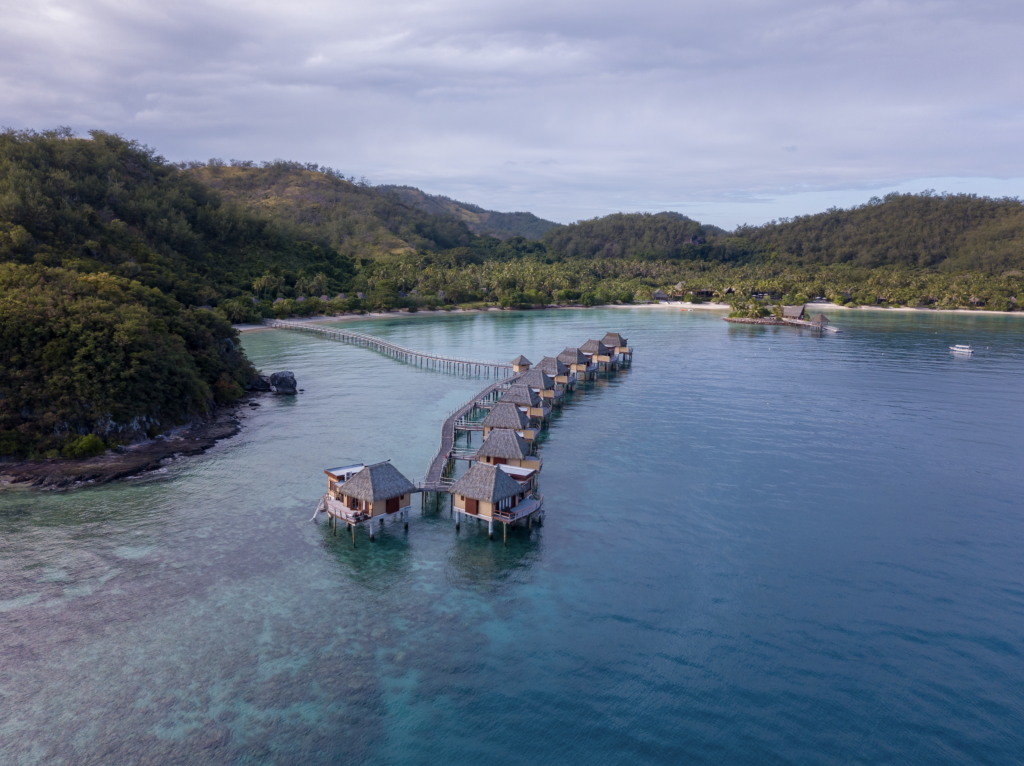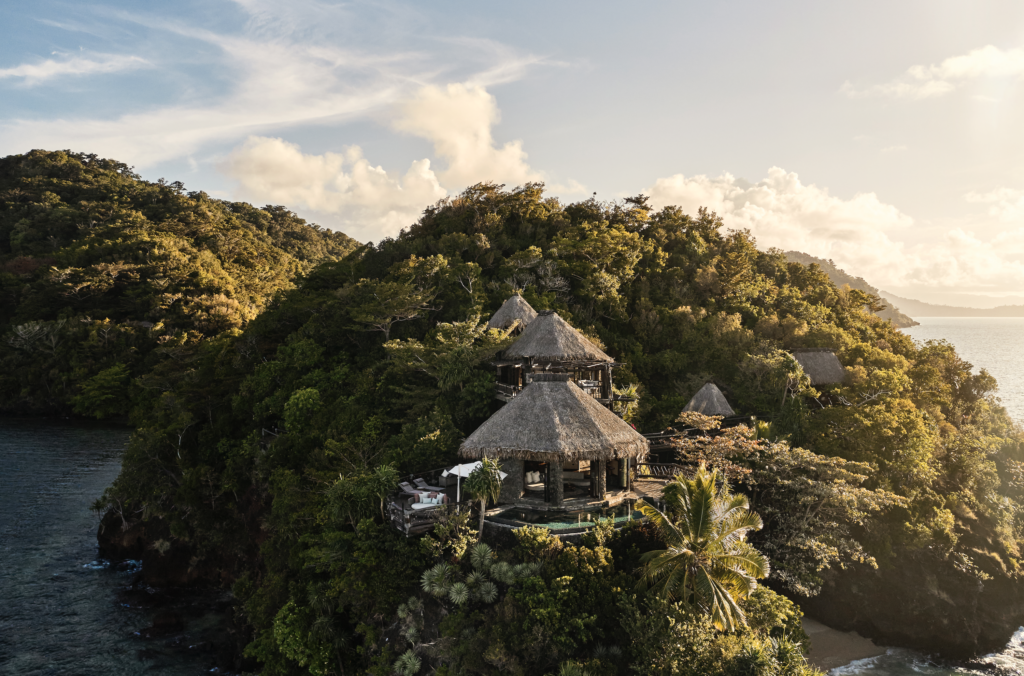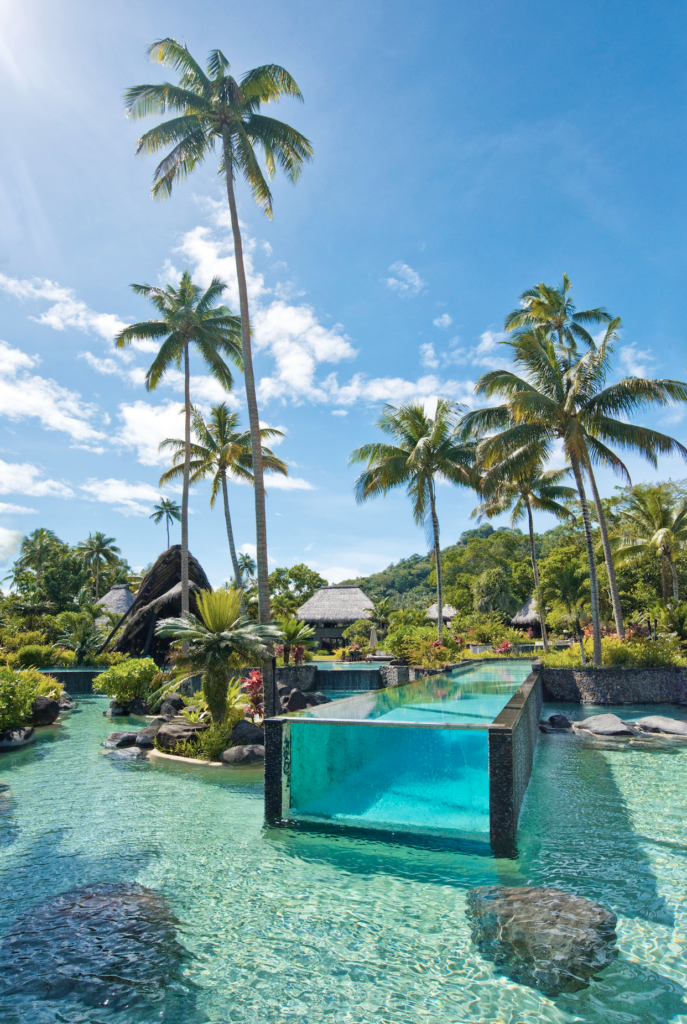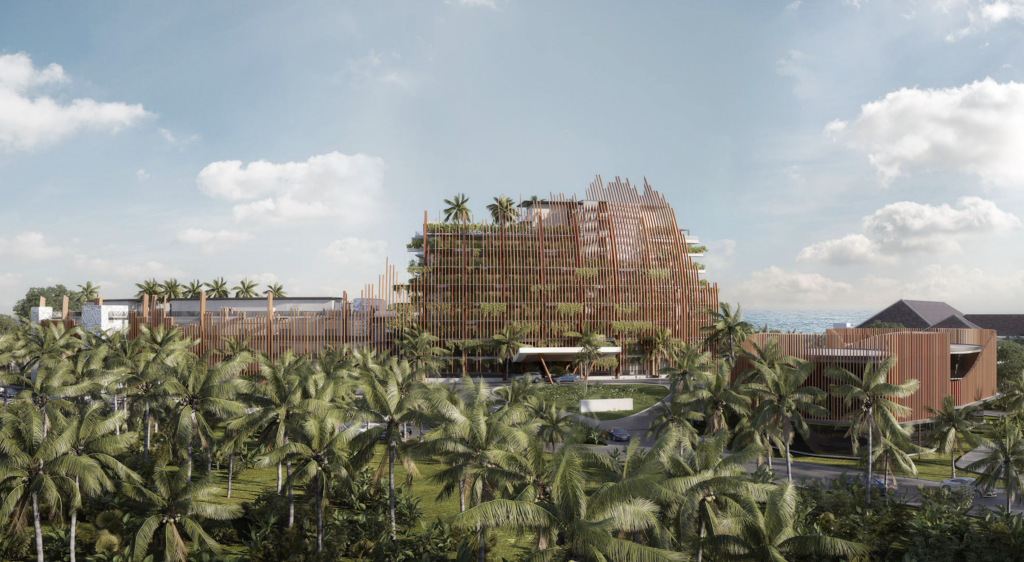How do you recreate something that has existed for hundreds of years and capture the power of that architecture within the tourism industry? “That’s what we are on our way to finding out,” says architect Frank Verevakabau of AAPi Design.
AAPi has been integral to the development of Fiji’s luxury tourism industry, playing a leading role in the design of high-end resorts and exclusive private island developments. AAPi’s Peter Rankin talks of a number of pivotal properties including Likuliku Lagoon Resort, the country’s first foray into overwater bungalows (or bures as they are called locally), and COMO Laucala Island — a place that the team describes as comprising daring pieces of architecture that put Fiji on the map when it came to the ultimate tropical luxury experience.
AAPi also worked on Sofitel Fiji Resort & Spa’s exclusive adults only retreat, the Waitui Beach Club on Denarau Island — one of the first of its kind in Fiji catering to this demographic.

So, what is it that links these pioneering developments and their distinctive tropical architectural language? As Peter puts it: “What we are developing is a blend of tropical architecture and sustainability. Our approach to design has to be sustainable here — we have to do it right from the outset. The environment is why people come here and it’s our responsibility to look after it.”
That ethos flows through every project that the team is involved in, and it’s immediately evident both visually and in the experience of spaces designed by AAPi. Likuliku Lagoon Resort, for example, is a group of overwater (and land-based) bures designed to echo the proportions and materiality of traditional Fijian dwellings — from a distance, the group of thatched roofs floating above the bay and dotted along its coastline appears consistent with the style of housing Fiji has created for centuries. Inside, the traditional is woven into contemporary opulence. A local hardwood, vesi, covers the floors; individually hand-carved wooden window pelmets frame the view; and hand-woven magi magi (coconut husk) art adorns the walls, while the interior thatched ceilings were woven with palm by artisans from the remote Lau Islands.

Likuliku Lagoon Resort was a turning point for Fijian tourism, Peter says. Another of those critical projects was Laucala Island, which he describes as one of “the most extraordinary tropical tourism experiences anywhere in the world; it’s the ultimate luxury”.
Like Likuliku, COMO Laucala Island is underpinned by a sustainable ethos: materials were sourced locally to create these “daring pieces of architecture. I remember climbing along a cliff edge to get to one spot. There’s nothing else quite like it,” Peter says.
On this private island with its own airstrip, each of the 25 villas is lost in its own world: suspended over the water, on hilltops, amid rainforest and beside the rolling waves.
With resort architecture, there’s often no need to design fully enclosed buildings. Atriums, for example, can often be open-air spaces “so you step away from the need to incorporate air conditioning and utilise natural ventilation”.
It’s these design considerations that balance sustainability with innovation, and that’s exactly what the team at AAPi is excited about.

Its next milestone project is still a work in progress, but as architect Tualagi Nokise says: “It is the future. It’s another huge step forward and one that blends a sustainable approach with the local design language and innovative tropical architecture.”
It is one of the largest developments currently underway in Fiji, comprising 190 guest suites in a new resort on Denarau Island.

Known as ‘Vatu Talei’, which translates as ‘the jewel’, it is an embodiment of the new era of architectural innovation in Fiji. Peter says: “A multi-storey screen will reflect a silhouette of the Sleeping Giant mountain range, which is first seen on arrival to Fiji by air. A green screen, it will be vegetated with tropical plants and continue to create a tropical canopy above an open-air atrium to offer the experience of being within a rainforest. Various pools and water features will connect to lazy rivers with a lagoon feel.”
Rooftop restaurants and food and beverage outlets will be integrated within a system of water features. The resort is due to open in 2025.
The Colours of Fiji
Dusk
A palette by Natural Paint Co.
Drawing on the melody of blush pinks, vibrant oranges, purples, and magentas of the sun setting over the Fijian islands, Dusk is defined by the last light of day.
It is a palette of tranquility spanning the immersive hues of Supernova and Wild Card paired with the softer pastel mid tones of Gratitude and Forever Young, capturing a sense of quiet serenity — moments of reflection as a day ends.
Rainforest
A palette by Natural Paint Co.
Here, lush rainforests are depicted in vivid tonal rhythms that move between the earthen hues of the forest floor to the vibrancy of tropical leaves and the mid tones of palm fronds swaying lazily at the forest’s fringe.
Anchored by the depth of brown-tinged green In the Valley and balanced by the lighter citrus hue of Full Moon, Rainforest is a calming palette that speaks to the natural beauty of untouched forests.
Use code FIJIHOME to order four free Natural Paint Co. test pots.






